Part 10: 560-580 YE-The Changing of Worlds
The Changing of Worlds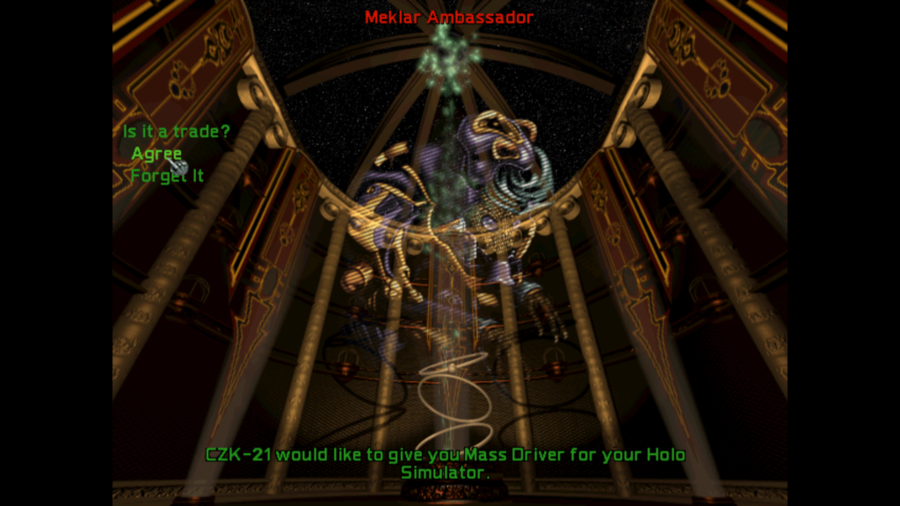

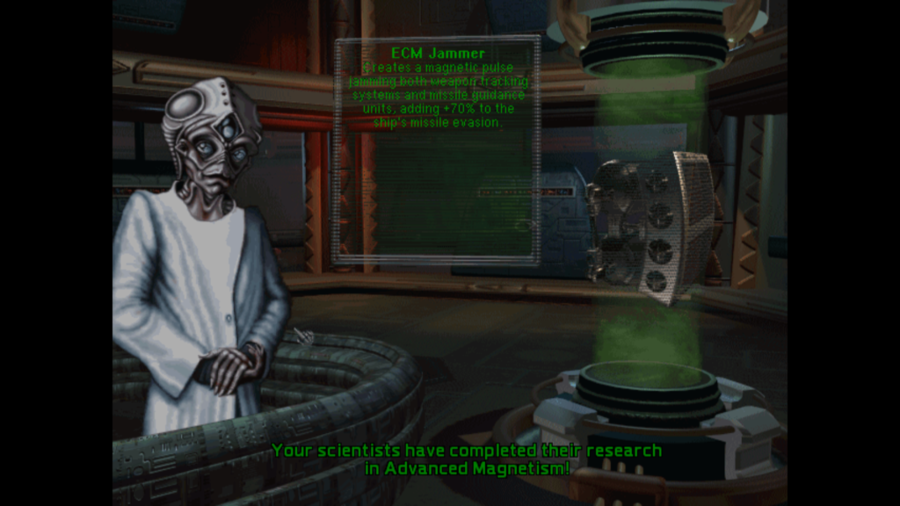
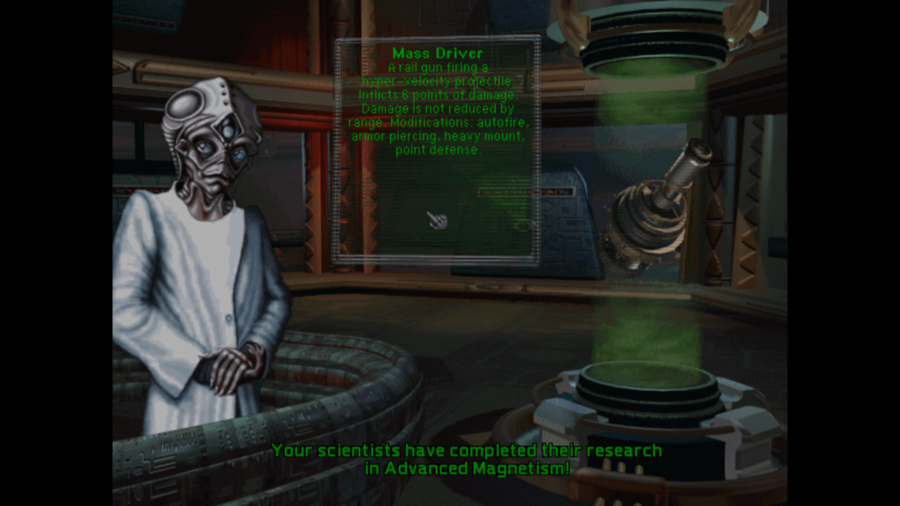
In mid-560, Narestan scientists using the services of the Consortium for Xenogovernmental Negotiations arranged the sale of advanced Narestan computing technology to the Meklars in the Autarchy, and the purchase of Meklar designs for high-efficiency magnetic accelerators suitable to void operations, placing metal slugs on target with high accuracy and high damage to the target. These designs were suitable to miniaturisation for attack boats and drones. Two years later, in 562, breakthroughs in the study of electromagnetism led to the development of defensive energy fields that interfered with incoming energy and attempted to deflect incoming objects. With these new developments and with the technology already acquired from alien civilisations, Narestan security vessels would have a wide variety of tools to deal with hostile vessels.
By this time, large-scale terraforming projects had started on several Narestan worlds, slowly reshaping them to more hospitable climes.

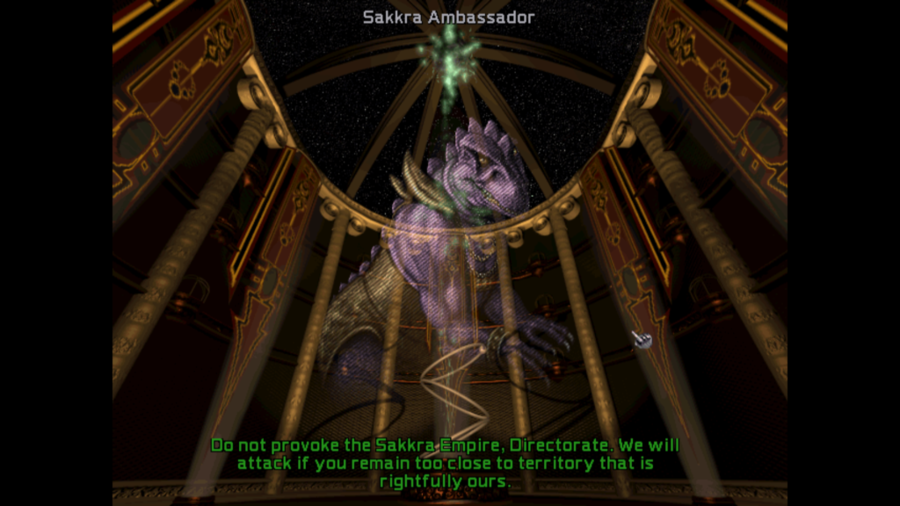
562 also marked the initial colonisation of Senet, a harsh, arid world wracked by constant duststorms, but one with notable deposits of industrial metals for exploitation which were expected to speed the development of the world. Within a year, communications probes had made contact with the Nation of Surdak, a member of the Coalition of Nations, an umbrella organisation loosely uniting the various Nations of the Sakkra.
Senet is a desert world, which, like radiated worlds, increases the upkeep cost of local infrastructure by 25% due to extensive wear and weathering.

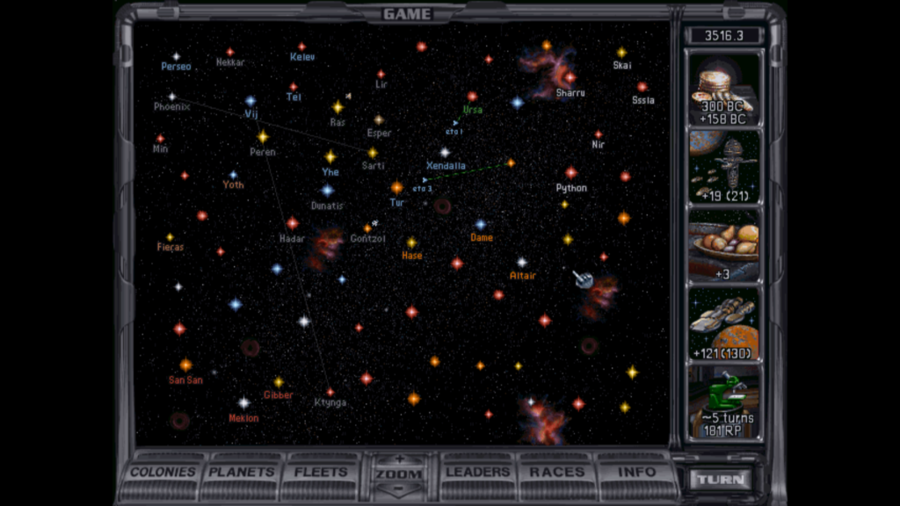
The Sakkra were a hardy, resilient warm-blooded reptiloid species that reproduced via large clutches of eggs. Sakkra resilience and hardiness allowed them to effectively create extensive subterranean habitats under conditions that might be considered intolerable for most species, their rapid reproduction allowed for rapid population growth, and their physical endurance has made them very effective in semi-skilled physical labor in agricultural fields. The Coalition of Nations was a loose confederation of political units, primarily ruled by hereditary aristocracies. Despite the efforts of the Coalition of Nations to mitigate internecine warfare amongst the Sakkra, low-level warfare amongst the various Nations was extremely common, which led to appalling waste of lives and resources, and retarded overall economic and scientific development of their civilisation. Most of the efforts of the Coalition of Nations had, thus far, been bent inwards, and the Consortium for Xenogovernmental Negotiations made little progress in establishing effective commercial relations with the various Sakkra nations.
Despite any of the disadvantages of their bloody system, the Coalition of Nations was the most expansive alien civilisation the Narestans had met, controlling five systems, second only to the Narestans in territory controlled. The Coalition's total population well exceeded that of Narestan civilisation, making them easily the most populous civilisation yet encountered.

By 567, Narestan scientists had developed a means to generate gravity-like fields that reacted against the inertial forces of ship maneuvers, reducing the hazard to crews in extreme maneuvers. Ships with an inertial stabiliser installed would be significantly nimbler, able to avoid a great deal of direct fire, as well as having some limited ability to evade guided shipkiller missiles.
Beam defense bonuses such as those provided by inertial stabilisers and crew experience contribute to missile evasion, at a sharply reduced rate. The base beam defense provided by ship speed, however, does not contribute to missile evasion.
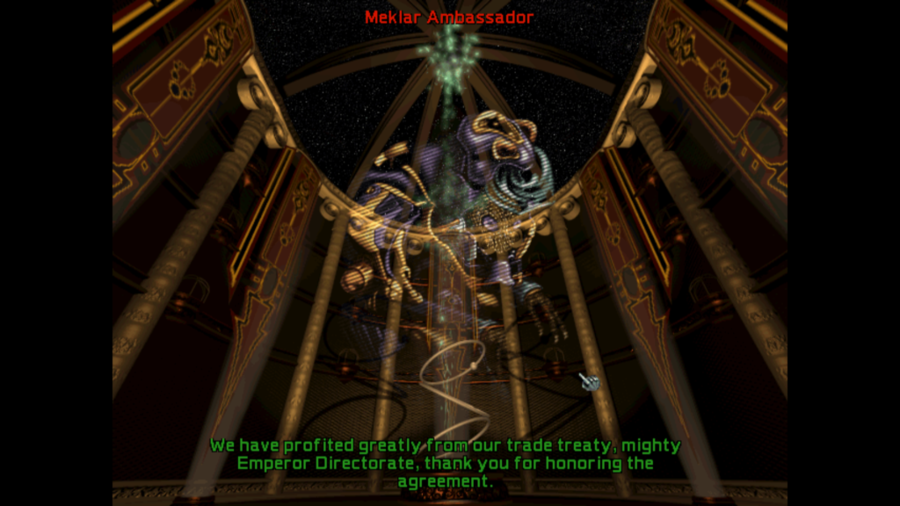

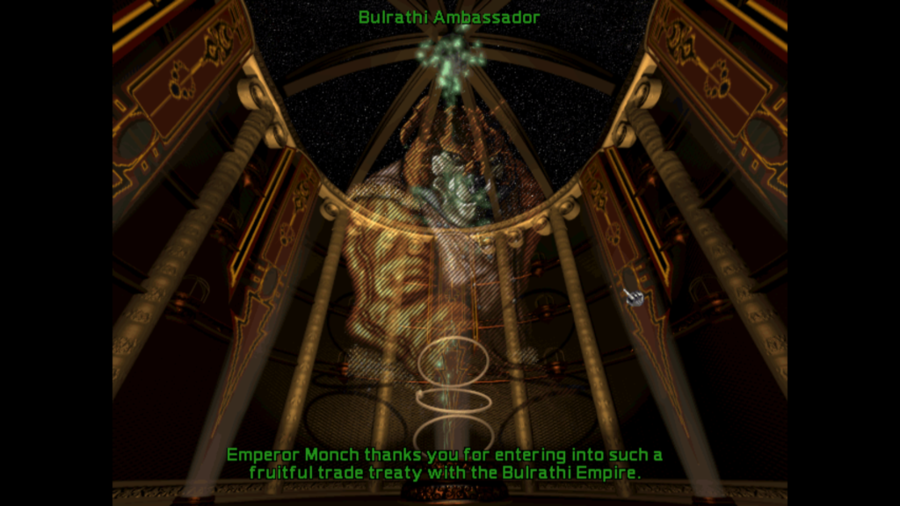
The early 570s brought strong evidence of the strong diplomatic position the policy of the Consortium for Xenogovernmental Negotiations had provided for Narestan civilisation, helping preserve its independence and prosperity. Both the Autarchy governing the Meklars and the United Empire of Bulra sent strong messages affirming the value they placed on the friendship and trade of the Narestan people, and the Interstellar Union governing the Mrrshan actually tendered a formal alliance request to the Consortium in 571. The Consortium was reluctant to commit to any such agreement, which both overestimated the Consortium's ability to influence Narestan internal affairs and might require violent entanglements at some point in the future.

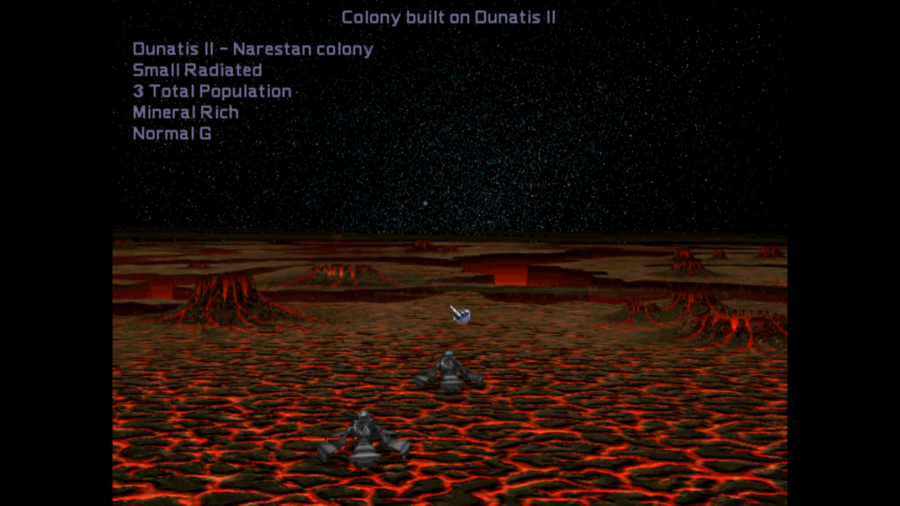
That same year, the bleak irradiated planet of Sedelet in the Peren system was colonised. Although the planet was small, hostile, and lacking in any terribly remarkable resources, nonetheless it might serve as a host to a viable colony, and most of the more promising planets in the region had already been colonised or were within systems already claimed by alien governments.
We're starting to run low on good colonisation prospects in explored space, but maybe we'll find some good things in the last few systems in range, and there's a few planets that will become more viable once we can compensate for their lousy gravity.

In 573, engineers working to extend the lessons of the first shields managed to develop scaled-up generators capable of forming a network to cover an entire planetary surface. Planets previously suffering from heavy radiation which had required near-buried cities could be protected from the deadly output of their stars, allowing terraforming to begin and easing the stresses on the colony.

Six years later, in 579, yet another small radiated planet, Talad, was colonised. This world in the Dunatis system served as a fueling station for scouts to roam further, seeking new worlds, even as it began to be developed as the newest hub of Narestan civilisation.

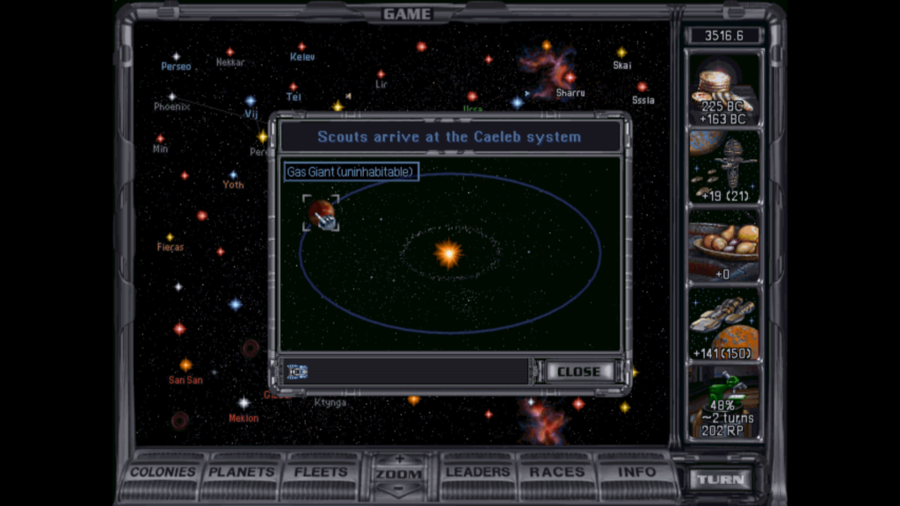
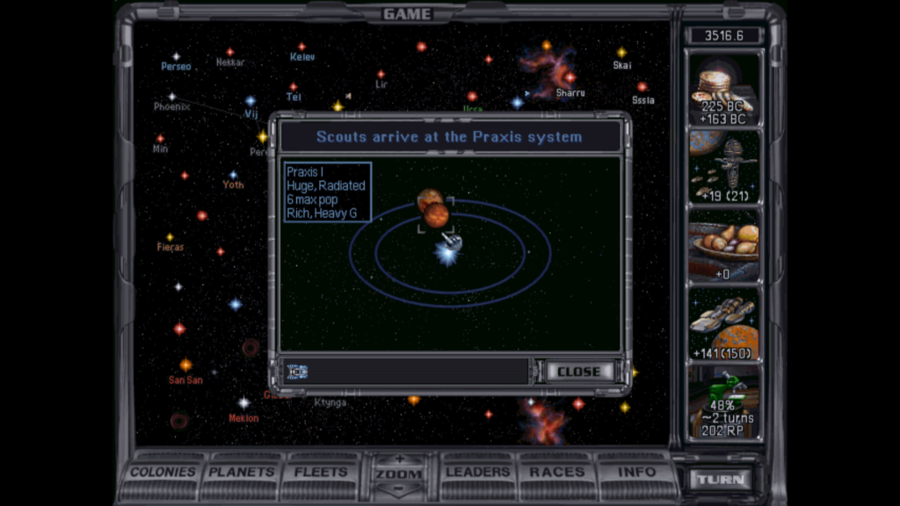
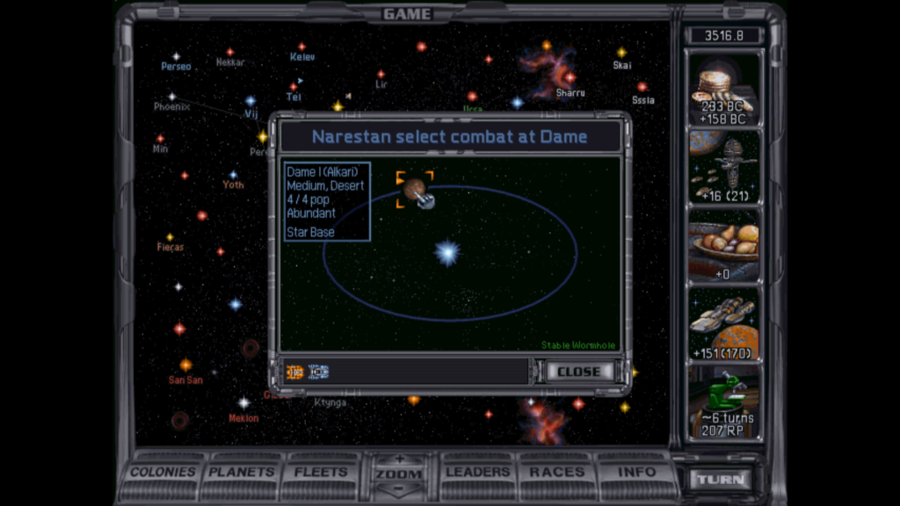
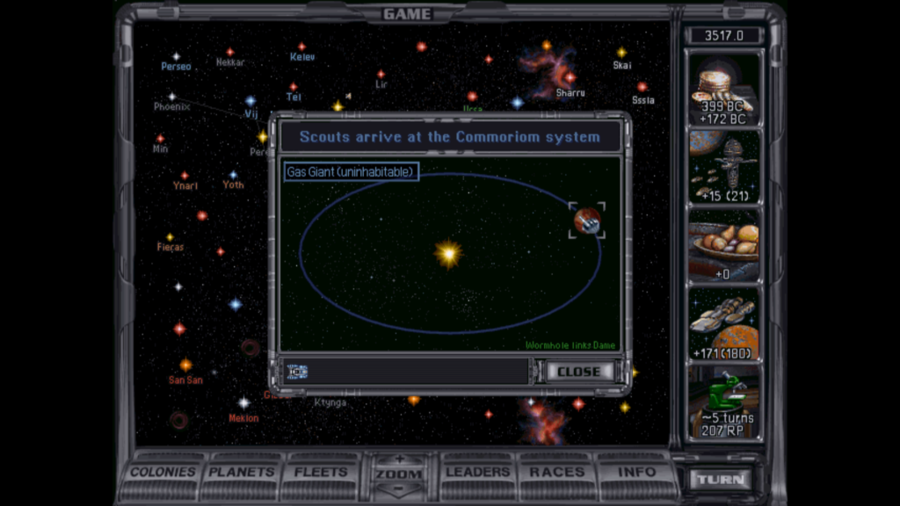
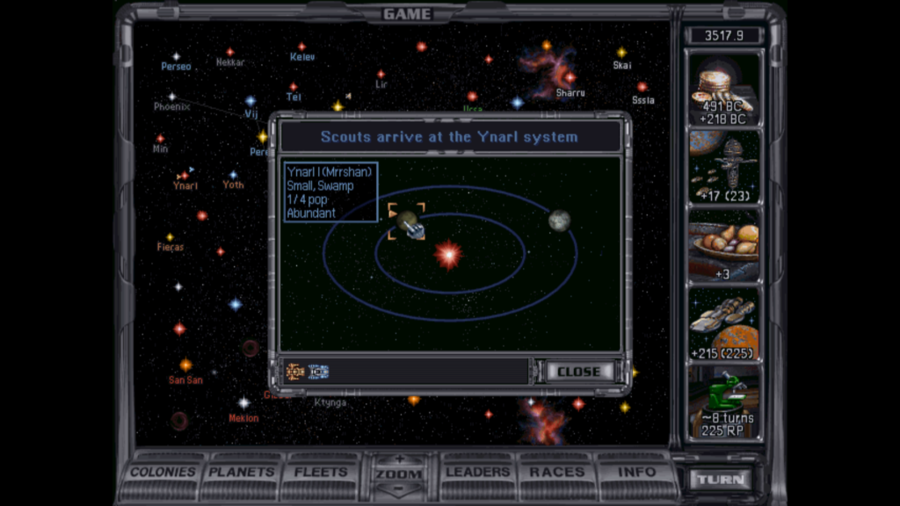
These two decades saw explorers from Narestan civilisation continue to probe further, learning more of the region. Many of the systems they visited were on the frontiers of other civilisations, while most of the rest lacked planets that could be economically exploited. Still, much of the region remained to be discovered, and confidence was high that more valuable worlds would be discovered in the future.


Finally, as 580 came to a close, the Consortium for Xenogovernmental Negotiations made agreements with some nations in the Coalition of Nations more amenable to reason, serving as a gateway to trade and scientific cooperation with the vast populations of Sakkra in the Coalition. Many firms took on major expenses to finance new lines of trade and communication, an expense to burden even the formidable economy of Narestan civilisation.
Narestan Civilisation as of 580
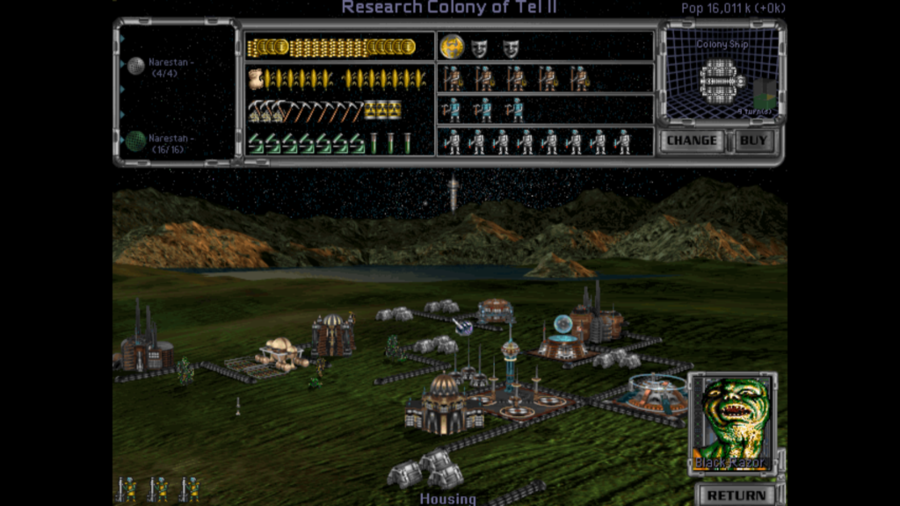
Nares remains the heart of Narestan civilisation and the center of its powerful economy. It serves as the port of call for recruits for a new colonisation venture to one of the last planets accessible to Narestans yet to be colonised.
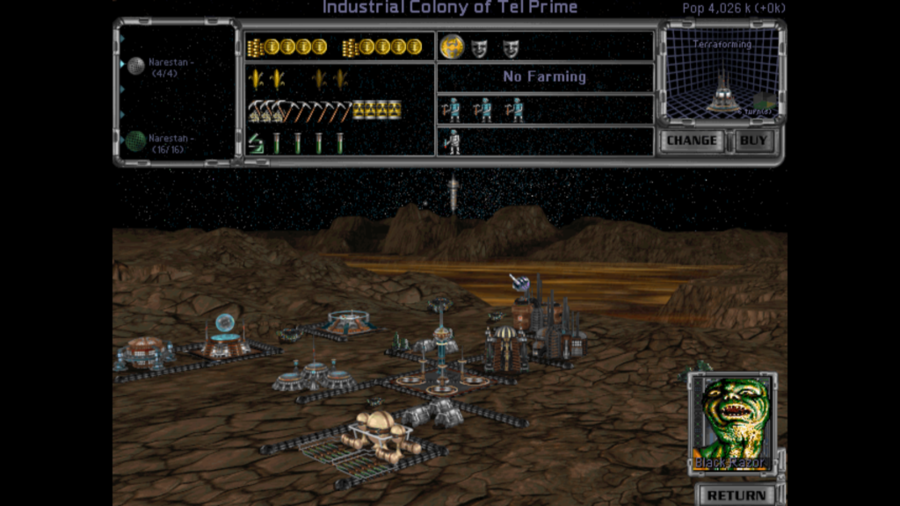
With the erection of a planetary shield system that protects Sedal from the radiation from Tel, the economy has thrived, relieved of the need to deal with continued damage to equipment from radiation. A project to introduce a basic breathable atmosphere and water to the planet is under way, although the world is still far from being able to be survived out of doors.
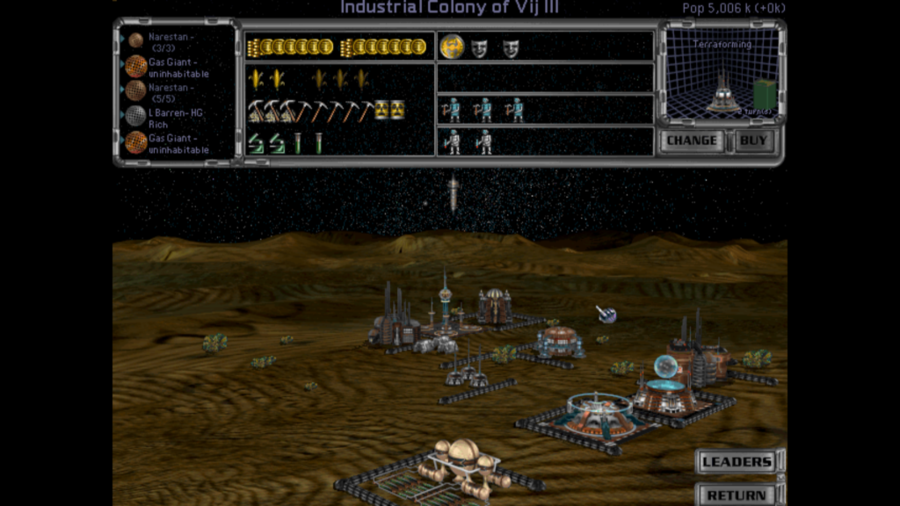
Sadesal now has a thin, if breathable, atmosphere and limited reserves of surface water, although the planet suffers from violent storms that wrack its atmosphere. The atmosphere is slowly being thickened, life introduced over growing portions of the planet, and water harvested from comets is being introduced to the planet, which is anticipated to have a true shirtsleeves environment within the next few years.
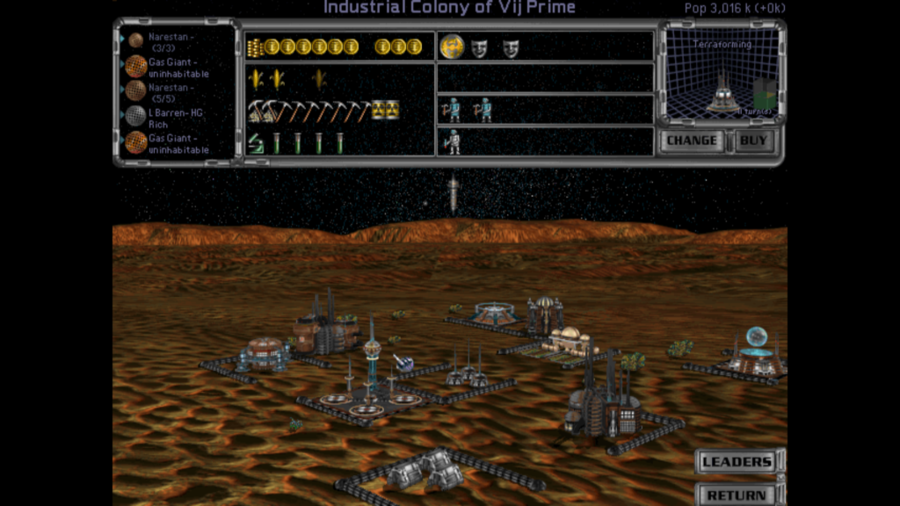
Tanan has been transformed in much the same way as Sadesal, although it is less far along in the introduction of more water and life. The violent storms have strained the local economy here more noticeably, given the smaller total population.
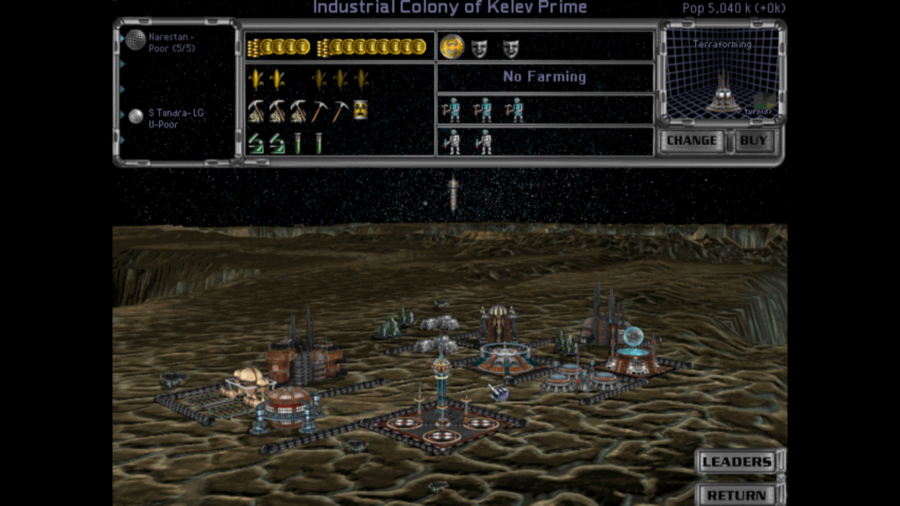
Talesen has reached a population of approximately five billion, and has had a planetary shield system erected to protect local populations from hostile radiation. It is a prosperous planet which has begun the first tentative steps of terraforming, readying the planet for a life-supporting environment in the future.

Renar's population has stabilised at approximately three billion, and the planet now hosts a semi-breathable atmosphere and limited quantities of water. The growth of its population has made the planet less completely dependent on external exports, although the harsh weather that has developed since its terraforming strains local resources heavily. Although heavy industry here is highly productive, the expense of hazardous waste disposal somewhat cuts back on the efficiency of its output, even with modern waste treatment techniques.
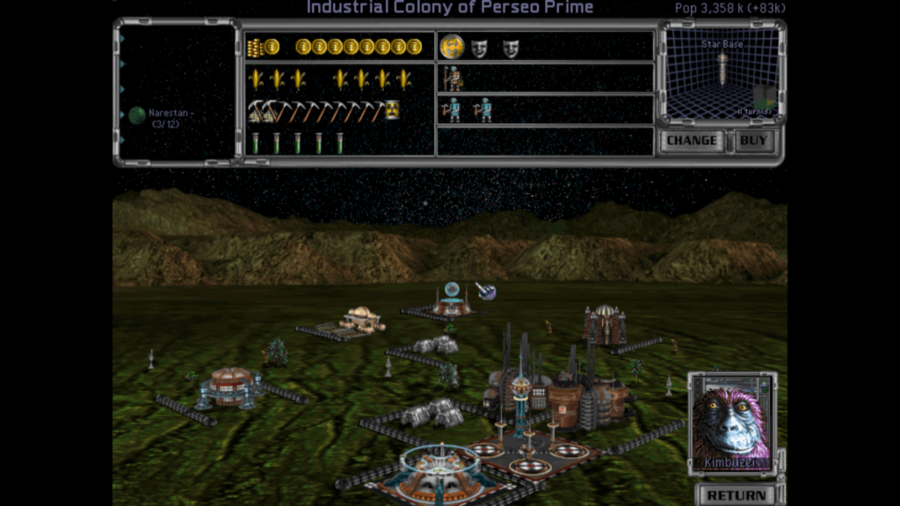
Tenesal's economy has been greatly strengthened over the past decades, with a larger population base, more sophisticated commercial practises, and widespread penetration of high-grade consumer positronics and entertainment. Its population, which now exceeds three billion, supports over 50 million persons employed in agriculture, making it a notable agricultural exporter, and one only expected to grow in importance over time. An armed orbital shipyard is under construction here, helping to secure the local area against any threat of piracy.
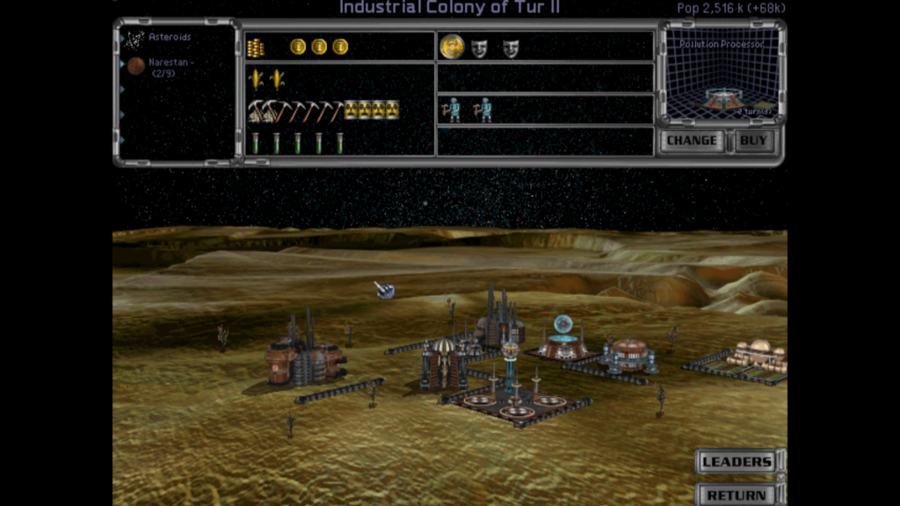
The economy of Talabar has matured over the past decades, with a stronger industrial base and improved commercial practises helping support it, and with modern luxuries and entertainment helping brighten the lives of its people. Even with its relatively small population, only about two and a half billion, it can easily support its heavy infrastructural development. Waste treatment plants to help mitigate the hazardous byproducts of industry in in the process of being established here, helping to address local problems before they grow too severe.
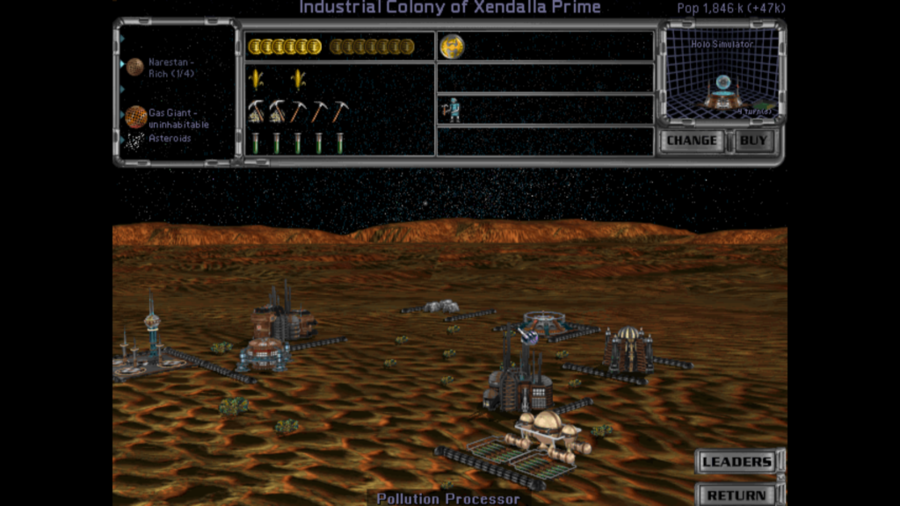
Senet has become a modern and developed world over the course of the past two decades, although it is one heavily dependent on outside investment to support it. Even so, the population is growing rapidly, and the local economy is growing with it.
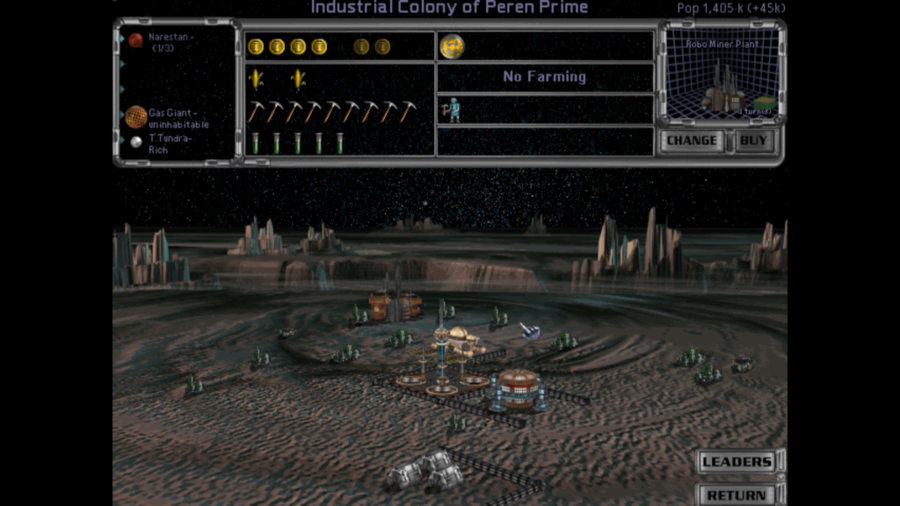
Sedelet has rapidly developed the basics of industry, agriculture, technology, and commerce since it has been established, and more extensive robotic automation of its industry is nearly complete. The planet remains somewhat backward compared to older planets, but it is developing rapidly and soon should enjoy many of the advantages it does not yet possess.

The colony on Talad is still extremely new, with little development yet in place. The basics of modern industry are being rapidly established here, providing a foundation for further development.
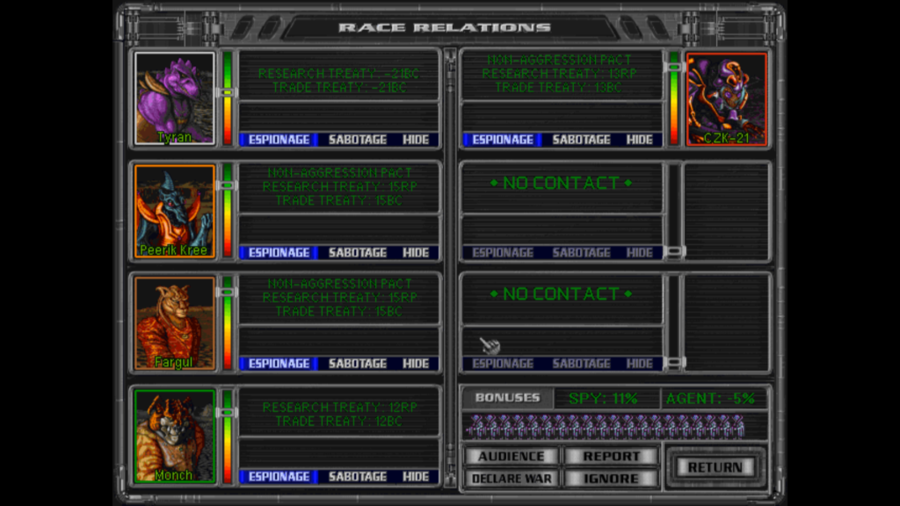
Over the past decades, trade volumes with the United Empire of Bulra have doubled, while scientific cooperation with Bulrathi researchers has begun to bear fruit. The other alien trade partners of Narestan civilisation have seen slowly growing trade volumes over time. The establishment of new relations with the Coalition of Nations has proved staggeringly expensive, however, although it should doubtlessly prove extremely beneficial as time passes.
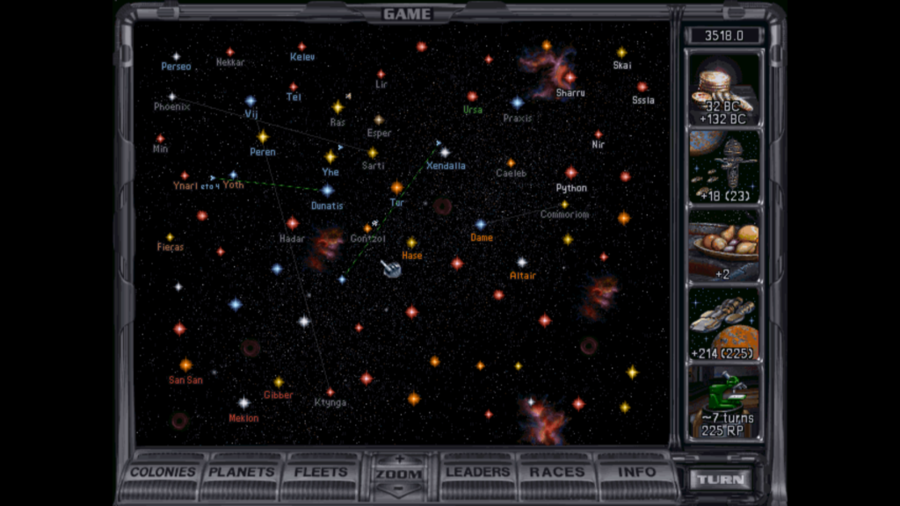
Narestan innovation has continued to accelerate, while Narestan transport capacity continues to grow, servicing vast interplanetary trade. Free capital for investment has dipped over the past twenty years as the formidable startup expenses of trade with the Sakkra are covered, but it seems certain a new economic boom will strike once this trade shows its benefits. Narestan civilisation as a whole is approaching a population of 50 billion, having grown more than five-fold over the past 180 years.
Investment Proposals
Technology Acquisition
The Bulrathi have developed designs for crude anti-matter energy storage units. Although the quantities involved are small and their FTL drives still have the approximate power output of Narestan drives, nonetheless the energy density of anti-matter means that they can achieve significantly higher endurance for voyages of their ships than can Narestan ships. They have expressed some willingness to trade this technology in exchange for the planetary shielding technology developed by the Narestans.
Please vote yea or nay on whether to trade our Planetary Radiation Shields for the Bulrathi's Iridium Fuel Cells, which will significantly boost our exploration and colonisation range.
Research Priorities
Many incremental improvements in productivity have been made in many different sectors of the economy, driving demand for an increasingly educated and skilled workforce to take advantage of the most sophisticated techniques available in many industries. The development of extensive university programs that give workers the chance to take advantage of these opportunities, and the continued adoption of productivity improvements by employers, is only a matter of time. Areas of research that seem promising include continued studies into theoretical physics, which may perhaps eventually overcome certain of the challenges of the more hostile environments of space, continued work on methods to deal with industrial pollution, ambitious programs in industrial agriculture, or a series of parallel studies by insurance companies, adjudicators, security firms, and finance firms to help insure more efficient, just, and swift operation of the basic legal and financial system that binds Narestan civilisation together.
Please vote on Planetary Gravity Generator, Atmosphere Renewer, Subterranean Farms, or Federation as our next major research target.
Narestan civilisation sits at the center of a growing net of trade which links together nearly the whole of the local cluster. As far as the Consortium for Xenogovernmental Negotiations is aware, the other alien civilisations known are at peace, barring minor internal wars within the Coalition of Nations. The future of the Narestans seems bright.